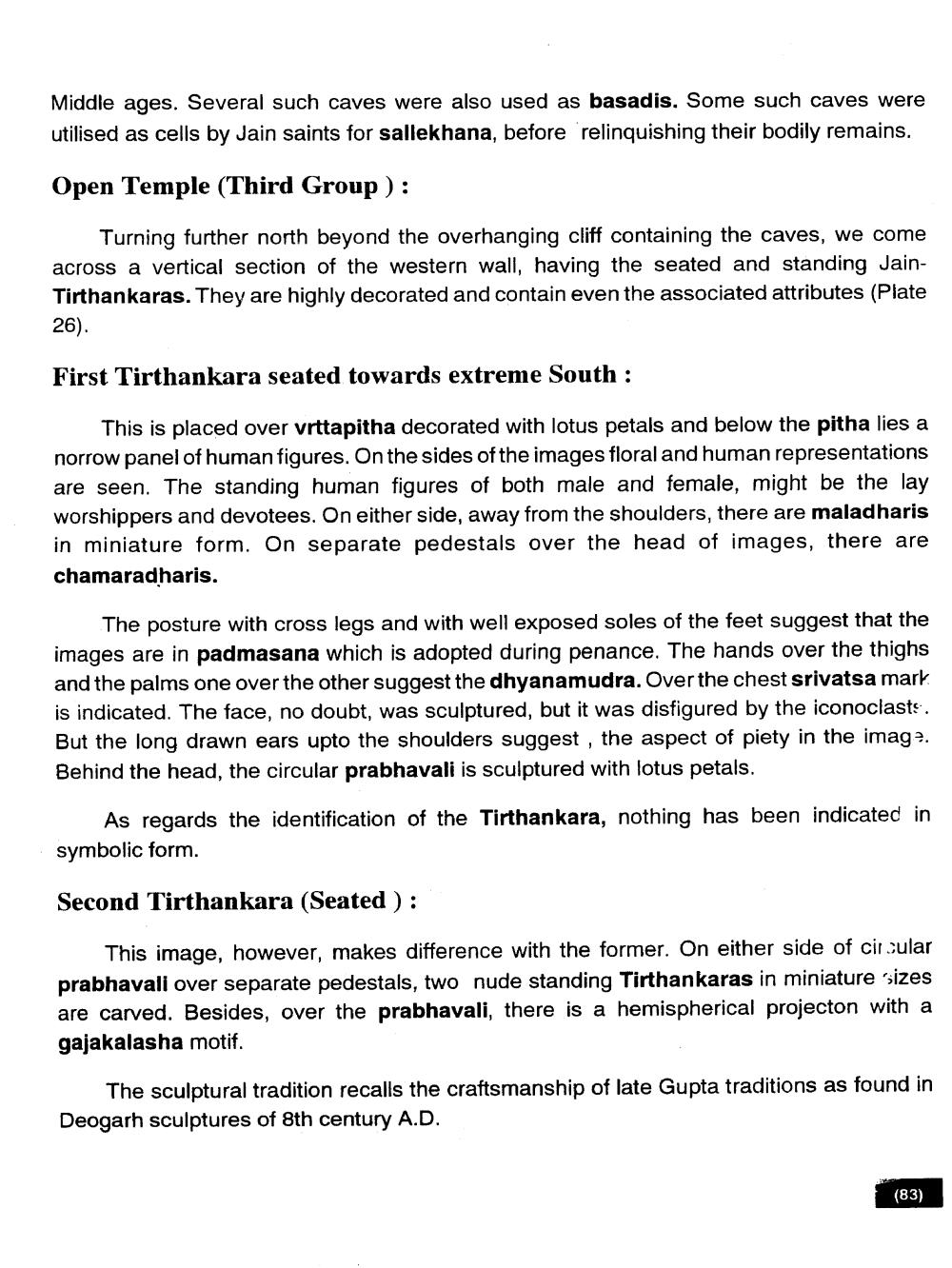________________
Middle ages. Several such caves were also used as basadis. Some such caves were utilised as cells by Jain saints for sallekhana, before relinquishing their bodily remains.
Open Temple (Third Group):
Turning further north beyond the overhanging cliff containing the caves, we come across a vertical section of the western wall, having the seated and standing JainTirthankaras. They are highly decorated and contain even the associated attributes (Plate
26).
First Tirthankara seated towards extreme South:
This is placed over vrttapitha decorated with lotus petals and below the pitha lies a norrow panel of human figures. On the sides of the images floral and human representations are seen. The standing human figures of both male and female, might be the lay worshippers and devotees. On either side, away from the shoulders, there are maladharis in miniature form. On separate pedestals over the head of images, there are chamaradharis.
The posture with cross legs and with well exposed soles of the feet suggest that the images are in padmasana which is adopted during penance. The hands over the thighs and the palms one over the other suggest the dhyanamudra. Over the chest srivatsa mark is indicated. The face, no doubt, was sculptured, but it was disfigured by the iconoclasts. But the long drawn ears upto the shoulders suggest, the aspect of piety in the image. Behind the head, the circular prabhavali is sculptured with lotus petals.
As regards the identification of the Tirthankara, nothing has been indicated in symbolic form.
Second Tirthankara (Seated) :
This image, however, makes difference with the former. On either side of circular prabhavali over separate pedestals, two nude standing Tirthankaras in miniature sizes are carved. Besides, over the prabhavali, there is a hemispherical projecton with a gajakalasha motif.
The sculptural tradition recalls the craftsmanship of late Gupta traditions as found in Deogarh sculptures of 8th century A.D.
(83)




